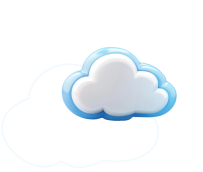 blog.by Nadine Mohamed
blog.by Nadine Mohamed
Every business operates within a complex and dynamic environment that significantly influences its operations, decision-making, and long-term viability. This environment consists of multiple layers of external and internal factors that can shape opportunities, risks, and strategic priorities. To effectively navigate this landscape, businesses must understand two primary categories of the environment: the micro environment and the macro environment.
These two levels of business context interact constantly, although they differ greatly in scope, influence, and controllability. The micro environment comprises elements that are close to the company and directly impact its ability to serve customers and generate value, while the macro environment includes broader societal, economic, political, and technological forces that influence all players in the industry or market.
A clear understanding of both environments is crucial for leaders, managers, and strategists aiming to anticipate changes, maintain competitiveness, and create sustainable growth. This article provides an in-depth comparison of the micro and macro environments, explores their components and interactions, and highlights how both influence business strategy.
What Is the Micro Environment?
The micro environment refers to the immediate surroundings and entities that directly affect a company’s operations and performance. These factors are closely connected to the organization and, in many cases, are partially controllable or at least influenceable. Businesses often build direct relationships with actors in the micro environment, and these interactions determine how effectively a firm can meet its goals, satisfy customers, and compete in the marketplace. The micro environment includes elements such as customers, suppliers, competitors, intermediaries, and publics. Each of these components plays a critical role in shaping daily operations and tactical decisions.
Key Components of the Micro Environment
Customers are the focal point of any business strategy. They represent the market segment whose needs and preferences the business seeks to satisfy. A firm must understand customer behavior, expectations, and trends to deliver products and services that create value. Suppliers are entities that provide the raw materials, components, or services required for production or operations. Maintaining strong supplier relationships ensures timely delivery, quality inputs, and cost-effective sourcing.
Competitors are other companies offering similar products or services. Analyzing competitors’ strategies, strengths, weaknesses, and market positions enables a company to differentiate itself and respond proactively to competitive threats. Intermediaries include agents, wholesalers, distributors, and retailers who assist in getting the product from the manufacturer to the end consumer. They play an essential role in product placement, promotion, and customer access. Publics refer to any group that has a real or potential interest in or impact on the company’s ability to achieve its objectives. This includes the media, local communities, financial institutions, pressure groups, and the general public. Effective communication and reputation management are key to handling relationships with various publics.
What Is the Macro Environment?
The macro environment encompasses the wider external forces that influence not only the individual business but also entire industries and economies. Unlike the micro environment, the macro environment is generally uncontrollable by any single organization and must be analyzed and anticipated for strategic planning. The macro environment includes economic, political, social, technological, environmental, legal, and global factors that shape the landscape in which businesses operate. These forces affect demand and supply conditions, cost structures, regulatory obligations, innovation pathways, and consumer attitudes. Businesses must monitor these external trends closely, as changes can either pose risks or open up new opportunities for growth and innovation.
Key Components of the Macro Environment
Economic factors influence the purchasing power and behavior of both consumers and businesses. This includes inflation rates, employment levels, interest rates, economic growth patterns, consumer confidence, and exchange rates. A slowdown in the economy might reduce consumer spending, while favorable interest rates may encourage investment. Political and legal factors cover government policies, regulations, political stability, trade laws, and taxation.
Businesses must comply with these regulations and be aware of policy changes that may affect operations, such as new labor laws, environmental rules, or international trade agreements. Social and cultural factors pertain to demographics, lifestyle changes, societal values, and consumer preferences. Shifts in population age, gender roles, health consciousness, and cultural norms can affect product demand and marketing approaches.
Technological factors include advancements in technology, automation, innovation, and research and development. Emerging technologies can disrupt industries or create entirely new markets, necessitating constant innovation and adaptability. Environmental factors refer to ecological and sustainability concerns. Businesses must consider resource scarcity, waste management, environmental regulations, and the impact of climate change. Companies that adopt sustainable practices may also gain reputational and competitive advantages. Global factors encompass issues such as globalization, international trade, geopolitical tensions, and cross-border economic dynamics. These can affect supply chains, market expansion, and operational risks.
Differences Between Micro and Macro Environment
The micro and macro environments differ in several fundamental ways. In terms of scope, the micro environment is company-specific and deals with the immediate surroundings of the organization. It includes stakeholders and forces that are closely linked to the company’s operations. On the other hand, the macro environment is broader in nature and represents external forces that affect all organizations within a market or industry. The degree of control also distinguishes these two environments.
While companies may have some influence over micro factors—such as negotiating better supplier contracts or launching competitive marketing campaigns—they have very limited or no control over macro-level forces like inflation, legislation, or technological shifts. The impact of these environments also varies in immediacy and nature. The micro environment exerts a direct impact on the company’s day-to-day operations and performance. For example, a disruption in supply or a customer complaint can have immediate consequences for production or service quality. The macro environment, in contrast, tends to influence strategic and long-term decision-making.
For instance, a change in trade tariffs may not affect immediate sales but could lead to a long-term shift in sourcing or manufacturing strategy. Furthermore, the components of these environments differ significantly. The micro environment includes specific, identifiable actors such as customers, suppliers, competitors, intermediaries, and publics. The macro environment includes broader dimensions such as economic conditions, political and legal frameworks, technological trends, social and cultural developments, environmental concerns, and global events. These differences determine how businesses analyze and respond to external factors.
In terms of focus, the micro environment relates to operational and tactical issues that support immediate performance goals, while the macro environment involves strategic considerations, forecasting, and long-term planning. Practical examples further illustrate the contrast: a supplier’s reliability or a competitor’s pricing strategy are micro-level concerns that can be addressed through operational adjustments. Conversely, a global recession, the passage of new environmental regulations, or the rise of artificial intelligence are macro-level developments that require strategic foresight and adaptation.
How Micro and Macro Environments Interact
Although distinct, the micro and macro environments are interconnected. Macro-level changes often influence micro-level dynamics, which in turn affect internal business operations. For example, a change in government policy (macro) may lead to an increase in raw material costs due to new tariffs or environmental regulations. This macro shift impacts supplier pricing and availability (micro), which subsequently affects a company’s cost structure and pricing decisions.
Similarly, a technological breakthrough (macro) may enable suppliers or competitors (micro) to develop more efficient production methods, prompting a business to reevaluate its own processes. Social and cultural shifts, such as growing awareness of sustainability (macro), can alter customer expectations (micro), compelling companies to adjust product features, marketing approaches, or sourcing strategies. Understanding these interactions helps businesses anticipate chain reactions, stay competitive, and maintain agility in a fast-changing environment.
Importance for Business Strategy
Analyzing both the micro and macro environments is essential for effective business strategy. The micro environment provides insight into the immediate stakeholders and operational dynamics that affect short-term performance. By understanding customer needs, supplier reliability, competitor behavior, and intermediary relationships, companies can optimize their value chain, improve service quality, and ensure responsiveness to market demand. On the strategic side, the macro environment plays a critical role in shaping long-term direction and innovation.
Macro analysis enables businesses to anticipate market shifts, adapt to regulatory changes, plan for economic cycles, and identify emerging opportunities. A thorough understanding of macro trends helps leaders make informed decisions about expansion, diversification, technology investment, and risk management.
Tools for Environmental Analysis
Several analytical tools help businesses assess the micro and macro environments effectively. One of the most common tools is SWOT analysis, which stands for Strengths, Weaknesses, Opportunities, and Threats. Strengths and weaknesses refer to internal capabilities and challenges—often influenced by micro-level factors such as supplier efficiency or customer satisfaction. Opportunities and threats relate to external macro-level forces such as technological advances or market disruptions.
Another widely used framework is PESTEL analysis, which focuses exclusively on macro-environmental factors. PESTEL stands for Political, Economic, Social, Technological, Environmental, and Legal. This tool helps identify and evaluate key trends in each macro dimension that may impact business strategy. By regularly conducting PESTEL and SWOT analyses, companies can maintain environmental awareness, align resources with strategic goals, and stay ahead of the competition.
Understanding the difference between the micro and macro environment is fundamental to achieving business success. The micro environment consists of immediate, controllable, or influenceable factors such as customers, suppliers, competitors, and intermediaries. These actors directly impact daily operations and can be managed through relationship-building, negotiation, and strategic adjustments. The macro environment, on the other hand, involves broad, uncontrollable forces such as economic trends, political changes, social movements, technological advancements, environmental concerns, and global dynamics.
These forces shape the external context in which businesses operate and must be analyzed for strategic foresight and long-term resilience. Effective businesses recognize the interplay between micro and macro environments and use this understanding to inform decisions, reduce risk, and exploit emerging opportunities. Continuous environmental scanning, robust stakeholder management, and proactive strategy development are key to thriving in an ever-evolving marketplace.
Are you ready to get started and study abroad? Just browse through more than 110,000 diverse programs worldwide, Educatly offers a diverse array of educational opportunities tailored to your interests and career goals.
Signing up is easy! Simply create a profile and explore our extensive database to find the perfect program for you. Whether you're drawn to renowned universities in bustling cities or serene campuses in scenic locations, Educatly ensures you'll find a match that suits your aspirations.
To receive personalized guidance every step of the way, schedule a free consultation with one of our experienced educational advisors. They're dedicated to helping you navigate the application process, understand visa requirements, and secure scholarships or financial aid, ensuring you access top-tier educational opportunities with confidence.




 blog.feedback.yes
blog.feedback.yes blog.feedback.no
blog.feedback.no